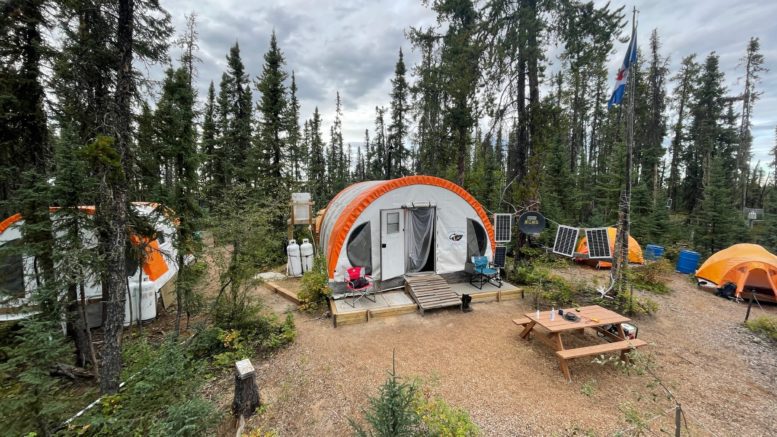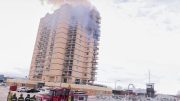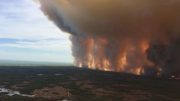Updated Thursday, Oct. 20 at 10:00 a.m.
While the Scotty Creek Research Centre was being devastated by wildfire over the weekend, fire crews were unable to fight the blaze directly due to extreme winds, according to a spokesperson for the department of Environment and Natural Resources (ENR).
“The unfortunate reality is that with the extreme winds we’ve seen in the area, it was simply unsafe to attack the fire directly,” ENR spokesperson Mike Westwick wrote on Wednesday.
“We will never recklessly send staff into harm’s way. And with the fire behaviour in the area, that was what we would be doing if we ordered them to directly attack that fire.”
Westwick said a fire crew and helicopter still tried to limit the damage at various times between last week and Monday.
While Westwick confirmed sprinklers were removed from the site on Oct. 13, he disputed the claim they were removed due to the risk of frost damage: “It was not a fear of frost damage which influenced decisions. It was the reality that equipment was not working due to freeze ups and was therefore ineffective”
“It is unlikely suppression activities conducted within our standards for staff safety would have entirely prevented loss.”
Station “almost completely destroyed” by wildfire
Sources from both Łı́ı́dlı̨ı̨ Kų́ę́ First Nation (LKFN) and department of Environment and Natural Resources (ENR) confirmed on Tuesday the station was damaged by a naturally-caused forest fire between Friday and Monday.
On Wednesday, LKFN released a statement detailing for the first time the extent of the damage, saying the station was “almost completely destroyed” by the blaze. The statement says five out of the station’s nine buildings “which housed state of the art research equipment, and provided laboratory space, sleeping accommodation and other facilities were burned to the ground. The remaining buildings sustained varying amounts of damage, and some will need to be replaced.”
Also in its statement, LKFN pointed the finger at ENR, saying the department “failed to attack the fire even though it was close to the site.”
They also claimed “weeks ago, [ENR] removed a sprinkler protection system, fearing it might be damaged by pending frost, while knowing the fire was active.”
The press release quotes LKFN Chief Kele Antoine as saying the destruction “is going have a series of impacts that will have an ongoing affect on our already delicate local economy. Our hotels, bed and breakfasts, charter airlines will take the biggest hit.
“Important climate change research, youth education, and the economic activities that is part of keeping it going will now be temporarily halted.”
The statement ends by saying,”Łı́ı́dlı̨ı̨ Kų́ę́ First Nation is planning to rebuild the station, but at this point we expect that the station will be closed for an extended period to allow for rebuilding.”
Scotty Creek, which is located south of Fort Simpson, is an Indigenous-led project that aims to study the impacts of climate change and industrial expansion on the ecosystem of the Northwest Territories, particularly permafrost thaw.
No Dehcho communities at risk from wildfire
Although Jean Marie River is at risk of wildfire smoke this week, ENR spokesperson Mike Westwick said no communities in the Dehcho region are in danger from wildfire.
Still, Westwick said crews are actively fireproofing other structures in the region, including by installing sprinklers.








